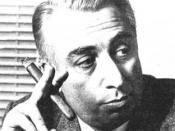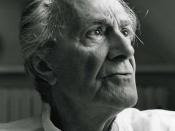IntroductionAccording to the postmodern theorist Jean-François Lyotard, the term represents a culmination of the process of modernity and enlightenment thought, toward speedy cultural change, to a state where constant change is the status quo, leaving the notion of progress contradictory. Postmodernism, thus, relies on concrete experience over abstract principles, always cognizant that the end result of one's experience will necessarily be fallible and relative rather than certain and universal. While modernism deals with purpose, design, hierarchy, distance, synthesis, centering, and presence, postmodernism is synonymous with play, chance, anarchy, participation, antithesis, dispersal, and absence. As a cultural movement, factors such as globalization, consumerism, the fragmentation of authority, and the commodification of knowledge have greatly contributed to the development of postmodernism.
History and DevelopmentIhab Hassan points out several instances when the term was used before postmodernism became a theoretical discipline in the 1970s. John Watkins Chapman, an English academic painter, used it in the late 1870s to mean postimpressionism, whereas Federico de Onis used it in 1934 to mean a reaction against the difficulty and experimentalism of modernist poetry.
The eminent historian Arnold Toynbee used it in 1939 to mean the end of the "modern," Western bourgeois order dating back to the 17th century, while Bernard Smith, in 1945, referred to it to mean the movement of socialist realism in painting.
By the late 19th century, Soren Kierkegaard and Karl Barth's important fideist approach, or the view that religious knowledge depends on faith and lifestyle, brought irreverence to reason and the notion that "truth is subjectivity." Nietzsche introduced the concept of existentialism and injected a new nihilism and atheism that influenced culture. The early 20th century saw aspects of postmodernism arise with the emergence of the Dada movement, which focused on the framing of objects and discourse as being as important...


